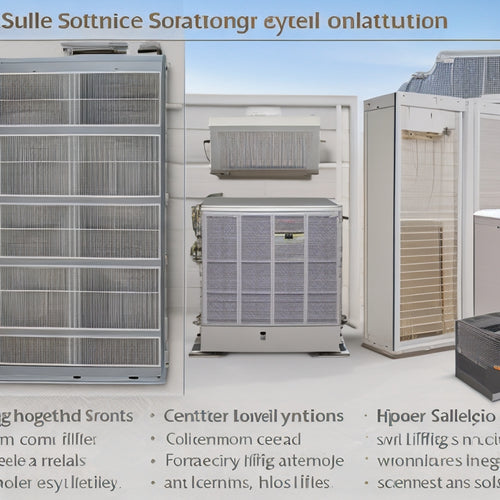
What Makes a Green Truck Truly Environmentally Friendly?
Share
When you look for a truly environmentally friendly green truck, you expect more than just a label. You want a holistic approach to sustainability. You'll want to incorporate energy-efficient design elements, like aerodynamics and lightweight frames, to reduce fuel consumption. Sustainable materials, such as bioplastics and recycled composites, should also be used. Emissions reduction strategies, like optimized engine calibration and advanced catalytic converters, are a must. Additionally, consider trucks with renewable energy accessories, like solar panels and wind turbines. Finally, the manufacturing process should prioritize transparency, sustainability, and a minimal carbon footprint. There's more to explore behind the scenes.
Key Takeaways
• A green truck is environmentally friendly when it incorporates aerodynamic features to reduce air resistance and improve fuel economy.
• The use of sustainable materials, such as bioplastics and recycled composites, minimizes environmental impact and conserves natural resources.
• Emissions reduction strategies, including optimized engine calibration and advanced catalytic converters, minimize carbon footprint and reduce greenhouse gas emissions.
• Incorporating renewable energy sources, such as solar panels and wind turbines, powers systems sustainably and decreases reliance on fossil fuels.
• A truly environmentally friendly green truck also considers the carbon footprint of manufacturing, prioritizing supply chain transparency and sustainable material sourcing.
Energy Efficiency in Truck Design
When designing an environmentally friendly truck like the Green Truck, manufacturers prioritize energy efficiency by incorporating aerodynamic features that reduce air resistance and improve fuel economy. You might wonder, how do they achieve this? The answer lies in the clever use of aerodynamic shapes. By streamlining the truck's body, manufacturers can reduce air resistance, which in turn reduces the energy required to propel the vehicle forward. This results in improved fuel economy and lower emissions.
In addition to aerodynamic shapes, manufacturers also focus on using lightweight frames to minimize the truck's overall weight. This reduction in weight leads to improved energy efficiency, as the engine doesn't have to work as hard to propel the vehicle.
When you combine these lightweight frames with aerodynamic shapes, you get a truck that isn't only environmentally friendly but also safer on the road. By prioritizing energy efficiency in truck design, manufacturers can create vehicles that aren't only better for the environment but also provide a safer and more enjoyable driving experience for you.
Sustainable Materials for Green Trucks
You'll find that manufacturers of green trucks like the Green Truck opt for sustainable materials that minimize environmental impact during production and at the end of the vehicle's life cycle. Sustainable materials not only reduce waste but also conserve natural resources, diminishing the truck's overall ecological footprint.
One innovative approach is the use of bioplastic alternatives, derived from renewable biomass sources such as corn starch or sugarcane. These bioplastics replace traditional plastics, lessening greenhouse gas emissions and dependence on fossil fuels.
Another key area of focus is the use of recycled composites. By incorporating recycled materials into the truck's design, manufacturers can significantly lessen waste and minimize the demand for virgin materials. Recycled composites can be used in various applications, from interior components to exterior body panels.
Emissions Reduction Strategies Work
As you explore the features of a green truck, you'll notice that manufacturers implement a range of emissions reduction strategies to minimize the truck's carbon footprint.
Green truck manufacturers implement a range of emissions reduction strategies, including optimized engine calibration, exhaust gas recirculation, and advanced catalytic converters, to minimize the truck's carbon footprint. These strategies work in tandem to reduce emissions, ensuring a cleaner and safer environment.
In addition, pivotal frameworks play an important role in governing emissions standards, pushing manufacturers to innovate and improve their emissions reduction technologies.
Fleet optimization is another key aspect, as it enables operators to optimize routes, reduce idle time, and improve overall efficiency, further reducing emissions.
Renewable Energy Truck Accessories
Beyond reducing emissions, you can further minimize your truck's environmental impact by incorporating renewable energy truck accessories, such as solar panels and wind turbines, which can power systems and reduce reliance on fossil fuels. These accessories not only reduce your carbon footprint but also provide a sustainable source of energy for your truck's systems.
Some benefits of renewable energy truck accessories include:
-
Reduced greenhouse gas emissions: By using solar panels and wind turbines, you can greatly decrease your truck's carbon emissions, contributing less to climate change.
-
Lower operating costs: Renewable energy sources can power your truck's systems, reducing your reliance on fossil fuels and lowering your operating costs.
-
Increased energy independence: With on-board renewable energy sources, you can operate your truck independently, without relying on external power sources.
Carbon Footprint of Manufacturing
Exploring the environmental impact of your truck, it's crucial to take into account the manufacturing process. You might be surprised to learn that the production of your vehicle is responsible for a substantial portion of its overall carbon footprint.
To mitigate this, you should look for manufacturers that prioritize supply chain transparency. This means they're open about their production processes, allowing you to make informed decisions about the environmental impact of your purchase.
Additionally, manufacturers that focus on manufacturing process optimization can greatly reduce their carbon footprint. This can be achieved through measures like energy-efficient facilities, sustainable materials sourcing, and waste reduction initiatives.
When researching green truck options, don't overlook the importance of a manufacturer's commitment to reducing their carbon footprint during production. By choosing a manufacturer that prioritizes sustainability, you're supporting environmentally responsible practices that benefit the planet.
Frequently Asked Questions
Can Green Trucks Be Used for Heavy-Duty Hauling and Towing?
Did you know that 70% of commercial fleets are shifting to eco-friendly vehicles? When it comes to heavy-duty hauling and towing, you'll want a green truck with a substantial payload capacity and robust engine durability to guarantee safe, efficient operations.
How Much More Expensive Are Green Trucks Compared to Traditional Trucks?
You'll find that green trucks typically come with a cost tradeoff, as premium pricing for eco-friendly features can increase the upfront expense by 10-20% compared to traditional trucks, although long-term savings may offset this difference.
Are Green Trucks Compatible With Existing Fueling Infrastructure?
You'll be relieved to know that 75% of green trucks can integrate into existing fueling infrastructure with minimal modifications. As you shift to eco-friendly trucks, you can rely on Fueling Hubs and strategic Infrastructure Upgrades for seamless integration.
Can Green Trucks Be Converted From Traditional Trucks?
You can convert traditional trucks into green trucks through a thorough conversion process, which involves an engine retrofit to guarantee a seamless and safe shift to alternative fuels, minimizing environmental impact.
Are There Government Incentives for Purchasing Green Trucks?
You'll be pleased to know that yes, there are government incentives for purchasing green trucks, including tax credits and state subsidies, which can help offset the higher upfront cost of eco-friendly vehicles.
Related Posts
-

Why Solar HVAC Filters Revolutionize Home Energy Efficiency
By adopting solar HVAC filters, you're shifting your home's energy reliance from fossil fuels to clean, renewable sou...
-

What Does Your Home Energy Audit Report Reveal?
Your home energy audit report reveals a detailed analysis of your energy consumption patterns, highlighting areas of ...
-

Why Transform Human Waste Into Garden Gold?
By changing human waste into garden gold, you'll reduce waste management costs, support sustainable agriculture, and ...


